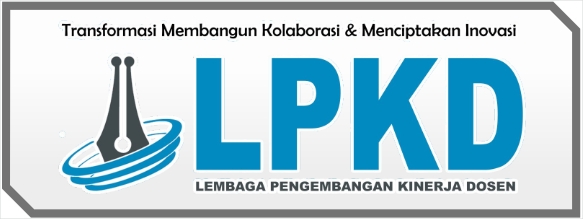Prosedur Pemeriksaan CT Scan Kepala Dengan Klinis Stroke Hemorrhagic Di RS Bhayangkara Makassar
DOI:
https://doi.org/10.55606/innovation.v2i1.2096Keywords:
Head CT Scan, Slice ThicknessAbstract
Background: CT Scan is a medical technology that can show images in the form of slices to see the anatomy of the human body because this technology combines X-rays and television. Basically, how a CT scan works uses a radiation source from X-rays. There are various examinations that can be carried out using a CT scan, one of which is a head examination with a CT scan. CT scan of the head at the Radiology Installation at Bhayangkara Hospital Makassar uses a Slice Thickness of 3 mm to produce a better image. The aim of this research is to determine the Head CT Scan Examination Procedure for Clinical Hemorrhagic Stroke in the Radiology Installation of Bhayangkara Hospital, Makassar.
Results: The results of this study indicate that the CT scan procedure of the head with clinical hemorrhagic stroke at the radiology installation at Bhayangkara Hospital, Makassar was carried out without any special preparation but the patient was instructed to remove metal objects or accessories around the head such as earrings, hairpins and necklaces. Using a slice thickness of 3 mm is good enough to display image results and confirm the diagnosis.
Conclusion: The head CT scan procedure for clinical hemorrhagic stroke was carried out using the head first protocol. The slice thickness used in this examination is 3 mm. The choice of slice thickness is the biggest factor because a thick slice thickness will produce images with low detail and cause artifacts, whereas a thin size will produce images with high detail but there is noise in the image.
References
Utami AP, Andriani I, Budiwati T. Prosedur Pemeriksaan Ct Scan Kepala Pada Kasus Cerebrovascular. 2015;16–9.
Muhammad, A M& N. NEURO SAINS MENJIWAI SISTEM SARAF DAN OTAK. Edisi Pert. Jakarta: KENCANA; 2021. 313 p.
Kiswoyo AS, Wibowo GM, Ferriastuti W. Penghitungan Volumetrik Perdarahan Dengan Metode Volume Automatik ( Software Volume Evaluation ) Dan Metode Manual ( Broderick ) Pad MSCT Kepala ( Study Eksperimen Pada Pasien Perdarahan Intraserebral di RS . Haji Surabaya ) VOLUMETRIC HEMORRHAGE CALCULA. J JLmeD. 2010;3(2):231–5.
Kendrick, Lampignano LE, John P. Bontrager’s Radiografhic Position and Related Anatomi. 2018. 71 p.
wiwit. Stroke&penangananny: memahami, mencegah&mengobati stroke. Cetakan II. Meita Sandra, editor. jogjakarta; 2017. 168 p.
Parinding NTA, Ali RH, Tubagus VN. Gambaran Hasil Pemeriksaan Ct Scan Kepala Pada Penderita Stroke Hemoragik Di Bagian Radiologi Fk. Unsrat/Smf Radiologi Blu Rsup Prof. Dr. R. D. Kandou Manado. e-CliniC. 2015;3(1):1–5.
S. A Price. Patofisiologi: konsep klinis proses-proses penyakit. Sixth edit. Jakarta; 2006. 734 p.
Brier J, lia dwi jayanti. No 主観的健康感を中心とした在宅高齢者における 健康関連指標に関する共分散構造分析Title. 2020;21(1):1–9.
Setiawan PA. Diagnosis Dan Tatalaksana Stroke Hemoragik. J Med Utama. 2020;02(01):402–6.
Laily RS. Hubungan Karakteristik Penderita dan Hipertensi dengan Kejadian Stroke Iskemik. J Berk Epidemiol. 2017;5(1):48–59.
Rahmadani E, Rustandi H. Peningkatan Kekuatan Otot Pasien Stroke Non Hemoragik dengan Hemiparese melalui Latihan Range of Motion (ROM) Pasif. J Telenursing. 2019;1(2):354–63.
Wardhani. Faktor Yang Berhubungan Dengan Pengetahuan Tentang Stroke. J Berk Epidemiol. 2014;2:2.
Jojang H, Runtuwene T, P.S. JM. Perbandingan NIHSS pada pasien stroke hemoragik dan non-hemoragik yang rawat inap di Bagian Neurologi RSUP Prof. Dr. R. D. Kandou Manado. e-CliniC. 2016;4(1):3–6.
Daniel Kartawiguna R. Instrumentasi pemindai tomografi komputer (CT-Scan). Cetakan ke. Yogyakarta; 2017. 174 p.
Annison H. Book review: Book review. Criminol Crim Justice. 2011;11(3):277–8.
Raman SP, Mahesh M, Blasko R V., Fishman EK. CT scan parameters and radiation dose: Practical advice for radiologists. J Am Coll Radiol. 2013;10(11):840–6.
Nugroho RA, Ardiyanto J, Wijokongko S. Analisis Variasi Slice Thickness Terhadap Informasi Anatomi Potongan Axial Pada Pemeriksaan MSCT Cervical Pada Kasus Trauma. J Imejing Diagnostik. 2020;6(2):91–5.
Kyongtae T. Bae. Intravenous Contrast Medium Administration and Scan Timing at CT: Considerations and Approaches. 2010;256.
Dewilsa nerifa & Yudha sagita. Dasar-dasar CT Scan. Anwar syaiful, editor. Sleman: CV budi utama; 2023. 107 p.



















